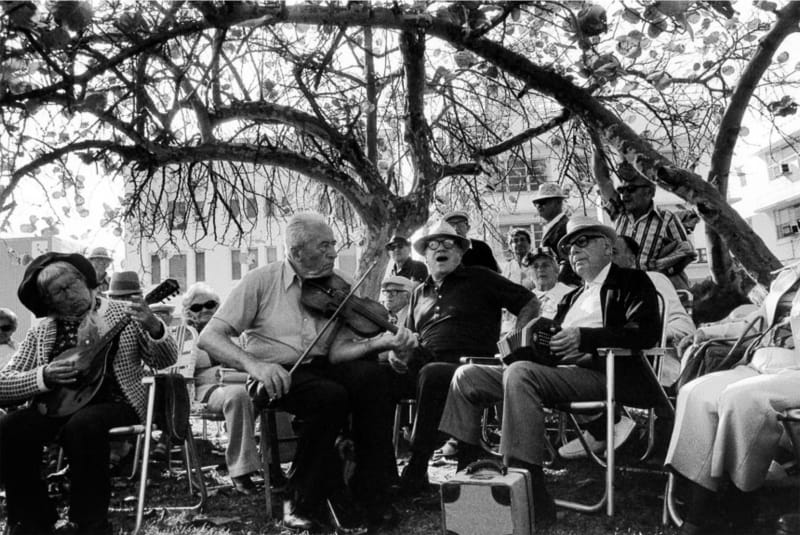The yearly and seasonal residents of South Beach aged right along with the hundreds of small hotels and apartment buildings that housed them. By 1987, the community's tight fabric was loose, becoming unwoven and unrecognizable. A few years later it was gone as if it never existed.
- A Conversation with Gary Monroe & Randy Gue: Saturday, September 14th: 2pm.
- Gallery hours: Thursday - Saturday, 11am - 5pm and also by appointment.
- Show continues through September 28.
- 432 East Howard Avenue, no. 24, Decatur GA 30030
Photographer Gary Monroe returned to Miami Beach in 1977 with an obsession to document his hometown. He discovered the Leica camera as an undergraduate at the University of South Florida and this find propelled him through graduate school. After he arrived home with his Leica, he spent the next ten years living in and documenting South Beach.
Today South Beach is associated with affluence, youth, fashion, and tourism. None of these words applied in the 1970s. The median age of residents in 1970 was 64.4 years old. South Beach was a neighborhood of aging small hotels and apartments with inexpensive rooms occupied by mostly Jewish retirees, many from the Northeast. These residents had "roots extending back to shtetls of Eastern Europe, survivors of the Czarist pogroms and the Nazi holocaust," as Monroe wrote.
Monroe's dynamic style created a unique and multifaceted portrait of a vital and vanishing community. He discovered that the retirees who slept in spartan rooms with a couple of chairs and a hot plate swam in the ocean together at sunrise, exercised in groups on the beach, sang and played music in parks, laughed during long conversations on hotel porches and park benches, and danced in faded ballrooms at night. These images capture singular but quotidian moments in the life of elderly South Beach residents in a visually striking and empathetic way.
The Gary Monroe photographs and papers are housed at Emory University's Stuart A. Rose Manuscript, Archives, and Rare Book Library. The collection is available for browsing, research, and teaching. The Rose Library is free and open to the public.

